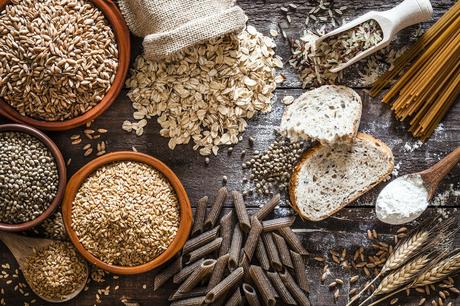"Carbohydrate tolerance" is not a scientifically defined term. However, it is frequently used to describe how a person's metabolism or digestive system responds to dietary carbohydrates.
When you eat foods containing sugars or starches, anything that isn't fiber, protein, or fat ultimately gets turned into glucose, which then makes its way into your bloodstream. Refined starches - such as pasta, bread, or cereal - turn into glucose quickly when digested.

This is why "carbohydrate tolerance" is closely related to "glucose tolerance." Glucose tolerance is a term used by doctors and scientists to indicate a person's ability to handle a dose of glucose, the type of simple sugar that is found in your blood.
Furthermore, glucose tolerance may not stay fixed - it can change over time as your body's insulin sensitivity improves. Understanding how to measure your glucose tolerance can help you decide if and when you can consider adding more carbs to your diet.
However, your carb tolerance may also be related to how your digestive system responds to carbohydrates, particularly if you have irritable bowel syndrome (IBS).
Start your FREE 30-day trial!
Get instant access to healthy low-carb and keto meal plans, fast and easy recipes, weight loss advice from medical experts, and so much more. A healthier life starts now with your free trial!
Testing glucose response to carbs
In a medical setting, your glucose tolerance is tested by measuring your blood sugar response to drinking a specific dose of glucose. This is called an oral glucose tolerance test (OGTT). Note that an OGTT does not measure your glucose response to dietary carbohydrate, per se, but rather to a pure, standardized glucose solution.
Your blood sugar response can be designated as normal, impaired, or abnormal, helping to determine whether you have prediabetes or diabetes.
Another, more detailed way to test is to look at your blood sugar and insulin response - the so-called Kraft test.
The Kraft test is an OGTT that measures both glucose and insulin levels. As Dr. Joseph R. Kraft showed, abnormally high insulin responses often occur years before abnormally high glucose responses, thereby allowing us to identify those at risk for prediabetes and diabetes much sooner than by waiting for blood sugars to climb.
However, eating less than 150 grams of carbohydrate per day in the three days preceding an OGTT will often result in higher blood sugars after the 75-gram glucose load. As a result, experts in the field recommended against using this test if you are eating a low-carb diet.
"Real-world" carbohydrate tolerance testing
For many, a better measurement may be a "real-world" tolerance test. You likely aren't going to be drinking an overly concentrated, synthetic glucose drink in your daily life, so why should you test your response to it?
Instead, you can test your tolerance to sushi, sweet potato, or even margaritas and cookies (as mentioned by Dr. Peter Attia in the Diet Doctor Podcast). While you can't measure insulin levels at home, you can measure your glucose response to real-world foods.
The best way to do this is first to measure your blood sugar before you eat. This is time zero. Then eat the food you want to test. Check your blood sugar at one and then two hours after eating. If, after two hours, your blood sugar hasn't returned to your pre-meal baseline, continue checking at hourly intervals until it does.
Of course, the more frequently you test, the more information you will get. You can measure your blood sugar every 15 minutes if you would like and see the shape of its rise and fall in more detail. (But that is a lot of finger sticks!)
This is where a continuous glucose monitor, or CGM, comes in. With a CGM, every food and every meal is its own tolerance test. All you have to do is pay attention to the readings before and after the meal.
Interpreting your glucose response
The general guidelines for interpreting your glucose responses are:
- The lower the maximal rise and the shorter the total duration of the rise are both signs of a healthier response. But that doesn't mean a healthy response needs to be a "flat line" with no glucose rise at all. Instead, use the tips below to better define a "healthy" glucose response.
- Extrapolating from OGTT cutoffs, a "normal" 2-hour blood sugar response to food would be below 140 mg/dL (7.8 mmol/L); prediabetes would be between 140 and 200 mg/dL (7.8 to 11 mmol/L), and type 2 diabetes is a blood glucose above 200 mg/dL (11.1 mmol/L).
- Shooting for an even lower peak blood glucose may be reasonable, because the blood sugar response to eating food is likely less than the response to drinking a pure glucose solution during an OGTT. Furthermore, there are data suggesting that people without diabetes spend most of their time under 120 mg/dL (6.6 mmol/L).
- Research suggests that in the absence of diabetes, the highest post-meal glucose peak should be within one hour, but in those with type 2 diabetes, it usually peaks at two hours.
Meal plans designed for results
With our personalized meal plans, we do the planning for you. All you have to focus on is cooking, eating, and enjoying healthy, delicious food.

FODMAPs and gluten
Not all bad reactions to carbohydrates can be attributed to your glucose response. Your individual carb tolerance may be related to how your digestive system responds to carbs.
The low-FODMAP diet
FODMAP is an acronym for fermentable oligosaccharides, disaccharides, monosaccharides, and polyols. These are short-chain carbohydrates found in many fruits, vegetables, legumes, grains, dairy products, and some processed foods.
If you have irritable bowel syndrome (IBS), you may find that your symptoms improve if you cut out specific FODMAP carbs. A low-FODMAP diet is now the recommended first-line therapy for IBS.
A low-FODMAP diet is essentially a low-carb diet. You can find out more in our guide about IBS and keto diets.
Gluten-free diet
Gluten is a protein found in wheat, rye, barley, and triticale, which are all carbohydrates. In people with celiac disease, the ingestion of gluten causes an immune reaction that damages the lining of their small intestine. The typical signs and symptoms of celiac disease are bloating, diarrhea, and the inability to absorb nutrients (e.g. iron) from food.
While the symptoms of celiac disease often arise in childhood, research shows that in those with the genetic predisposition, it may arise at any time in adulthood.
While it is controversial, evidence exists that some people may be sensitive to gluten or other substances in wheat, even in absence of true celiac disease. These individuals may have a lower physical tolerance for carbohydrates that contain gluten.
Learn more in our guide about gluten intolerance and low-carb diets.

Why knowing your carb tolerance is important
Despite the lack of a clear definition for "carb tolerance," knowing how your body reacts to carbohydrate foods is important, and it can help you learn to modify your diet in order to improve your blood sugar levels.
If you find that your blood sugar rises to the level of diabetes or prediabetes you should contact your healthcare professional for an evaluation. You should also consider whether a low-carbohydrate or keto diet may be right for you to better control your blood sugar.
Once you have started eating low carb, monitoring your carb tolerance over time may also help you decide when and if you can add some carbs back to your diet.
But keep in mind that carb tolerance isn't just about glucose response. Some people may have sensitivities to other components of carbohydrate foods. In this case, a low-FODMAP type of low-carb diet may be a helpful alternative.
Get your personalized meal plan with a FREE 30-day trial!

